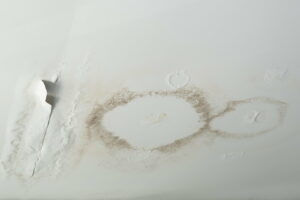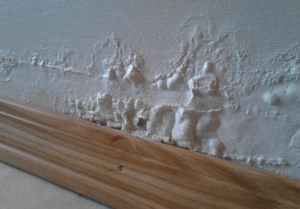Wall Leak Identification and Address - A Detailed Advice
Wall Leak Identification and Address - A Detailed Advice
Blog Article
Nearly everybody seems to have their personal perception involving Indicators of Water Damage Behind Walls.

Water spots on walls are not enjoyable to the eyes. In some cases it appears almost inevitable to experience water discolorations on walls in houses.
House owners staying in damp regions continuously deal with the worry of water spots on wall surfaces. That does not have to be the case for you. With accurate and well-rounded info on the root causes of water spots and punctual repair service procedures, you will constantly be a step ahead of such events. So, this short article promises to be a helpful overview for you.
3 Common Reasons For Water Spots on Walls
As opposed to popular belief, water stains on wall surfaces do not constantly originate from bad building materials. There are numerous root causes of water spots on walls. These include:
Poor Water drainage
This will certainly avoid water from leaking right into the wall surfaces. This links to too much moisture that you observe on the wall surfaces of your building.
The leading cause of damp walls, in this case, can be a poor drainage system. It can also result from inadequate administration of sewage pipelines that go through the structure.
Moist
When hot moist air consults with dry cold air, it triggers water beads to form on the wall surfaces of buildings. This occurs in kitchens and bathrooms when there is heavy steam from food preparation or showers. The water droplets can tarnish the surrounding walls in these parts of your home and also spread to other locations.
Wet or condensation affects the roofing and also walls of buildings. When the wall is damp, it creates an appropriate environment for the growth of fungis and microorganisms.
Pipeline Leaks
Most homes have a network of pipes within the wall surfaces. This ensures that the pipes are well away from the reach of harmful rats. It always increases the practicality of such pipes, as there is little oxygen within the wall surfaces. This prevents corrosion.
A downside to this is that water leakage impacts the wall surfaces of the structure and also triggers extensive damage. An indicator of damaged pipelines is the appearance of a water stain on the wall.
Water Stains on Wall Surface: Repair Tips
When dealing with water discolorations, house owners would typically desire a fast solution. Yet, they would certainly quickly realize this is detrimental as the water discolorations repeat. So, here are a few practical pointers that will assist you in the fixing of water stains on walls:
Pro Tip
A houseplant in your house likewise increases its humidity. So, if your house is currently humid, you might want to introduce houseplants with marginal transpiration. An instance of appropriate houseplants is succulents.
Verdict
Although no one intends to have water spots on walls in their home, it can occur to the best people. This post provides you utilize, as you currently understand just how to manage this mishap if it does take place.
It is constantly best to recruit specialist services to assist fix the damages in your house.
In some cases it seems almost inescapable to experience water discolorations on wall surfaces in residences.
In contrast to prominent idea, water stains on wall surfaces do not always stem from inadequate structure products. There are a number of causes of water discolorations on walls. The water droplets can discolor the bordering walls in these components of your residence as well as spread to various other areas.
Right here are a couple of valuable tips that will direct you in the fixing of water discolorations on walls:
CHECKING FOR WATER DAMAGE
Water damage can be costly, and it may begin before you even notice the first signs of trouble. Water damage can cause mold and mildew in your walls and floors, which can create an abundance of health concerns for your family. It can also lead to costly repairs of various appliances and general home fixtures. To avoid the pricey consequences of water damage, here are Warner Service’s top 5 places you should check:
The walls – The easiest place to spot the beginnings of water damage is on the walls and ceilings of your home. If water damage is present, there will most likely be water stains, especially around the windows and doorframes, and/or cracks in the drywall. If a stain looks unusual (discolored to brown, black or gray, raised texture), has a swollen appearance or is soft to the touch, contact a professional immediately. The pipes – To avoid water damage, consistently check the pipes in your kitchen (especially the dishwasher and ice maker), bathrooms, laundry room (specifically washing machines) and basement for corrosion, leaks and water stains. Pay special attention to where the pipes connect in your home and the location of caulking around the bathroom fixtures, including toilets, sinks, showers and tubs. Missing or loose caulking and grout could be signs of leaking water. This seepage can also quickly cause mold and rust, so double check your water heater and tank for wet spots on the floor. The floor – Water damage is very easy to spot on the floor. Look for any warping or buckling of the material, especially in the basement. If your home has wood flooring, look for bright white or dark stains. If your home has carpeting, keep it dry and clean. A damp carpet that smells of mold could cause water damage and health problems. To avoid this, consider installing floor pans under your appliances to help prevent damages from small, slow and undetected leaks. The basement and attic – If your basement or attic smells odd check for mold and mildew around the area, especially the valley where the roof meets. While you are inspecting those areas, check for wall cracks, floor stains, rust and dampness in the insulation. If you live in a colder and/or rainier climate, perform routine checks for water damage from melting snow or ice and rain. The exterior – Check the roof for damaged flashing and missing, cracked or curled shingles. There should also be no standing water anywhere outside your home. This could be caused by puddles, leaky rain gutters or hoses, poor drainage, or short gutter spouts. Invest in a sump pump system or water flow monitoring system, and perform routine maintenance on these outdoor appliances to avoid indoor water damage.

I'm very fascinated by How to Remove Water Stains from Walls and Ceilings and I am praying you enjoyed reading my page. So long as you appreciated our blog post kindly make sure you remember to share it. Thank-you for going through it.
Water woes? Connect. Report this page